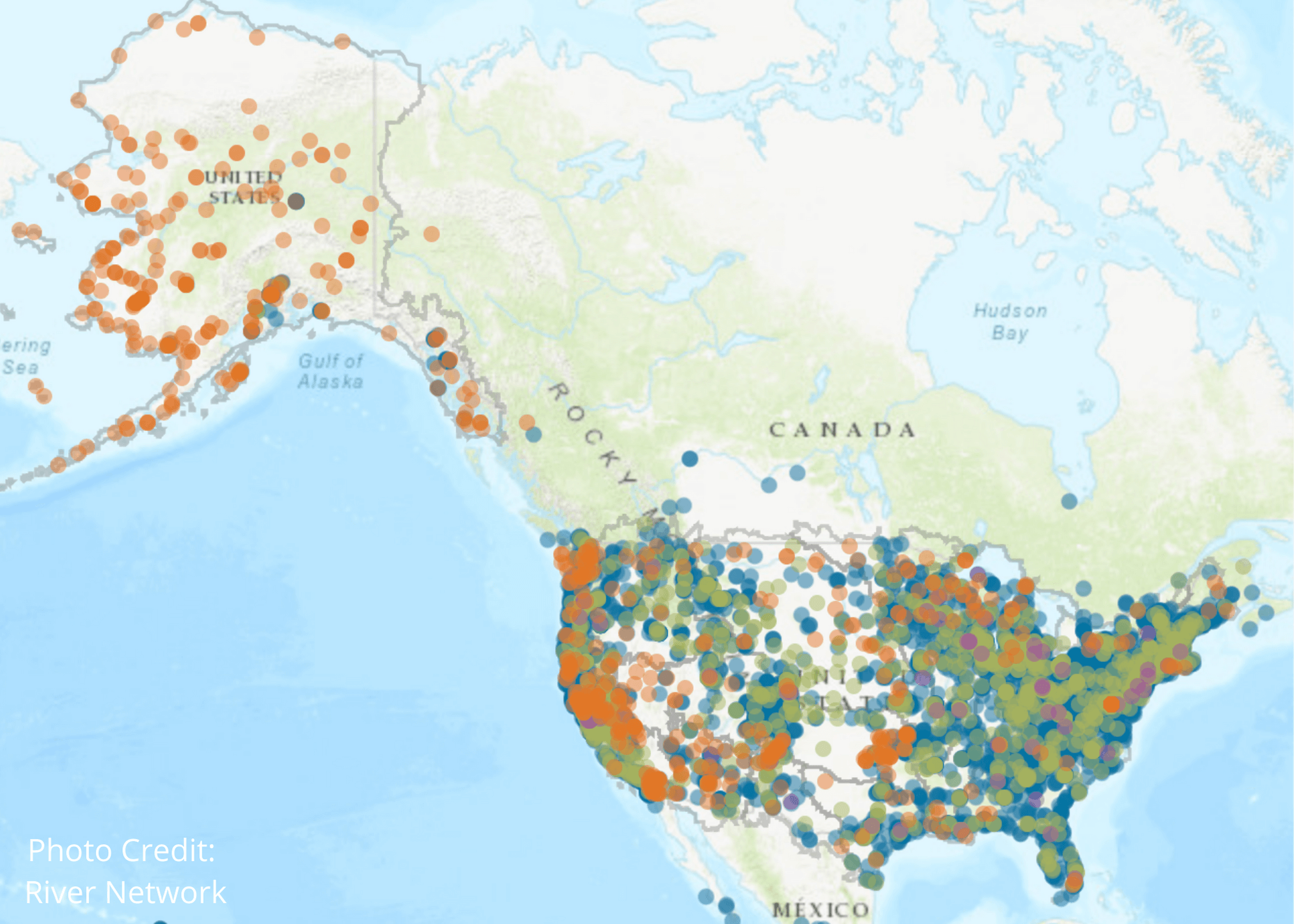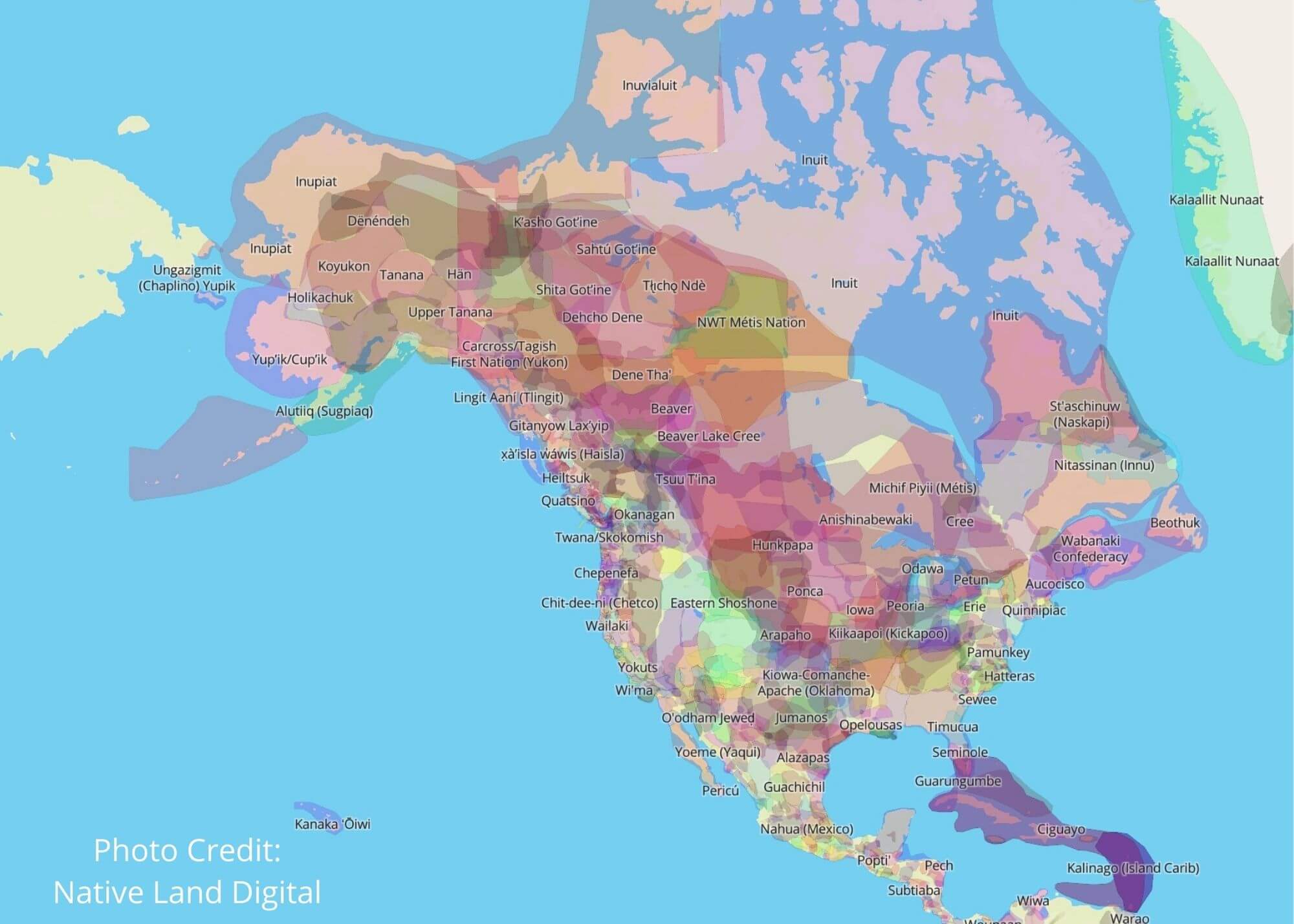Standing Stronger Together – NGOs, Tribes, and Water
by Nicole Silk, River Network and Emma Robbins, Dig Deep
Context: Equitable Solutions Require Diverse Perspectives
We believe that everyone should have access to clean, safe, affordable drinking water and healthy rivers. Sadly, this access is not equal across our nation, with low-income and predominantly non-white communities and neighborhoods experiencing stark disparities. Perhaps the most extreme examples of this inequality exist among the tribal and Indigenous communities across our nation. As the original stewards of the land and water now part of the United States, native peoples can be tremendous partners in efforts to protect and restore rivers. How do non-natives become better allies in this quest for access to both clean water and healthy rivers?
In river protection and water advocacy, much of our work is hard-wired to geography and community: the footprint of a particular river, an area of restoration or protection, a dam to be removed, a neighborhood threatened with flooding, or a community with inadequate access to safe, clean, affordable drinking water. Rivers and floodplains are also ground zero for climate change impacts and resiliency. These systems are designed to carry water downstream, with floodplains serving as a kind of sponge for high flows of a specific duration. The plants, animals, and people living along these systems have evolved to expect a certain range of flows during particular seasons, as well as throughout the year. As precipitation patterns become increasingly erratic, dynamic, and unpredictable as a result of climate change, we need to rethink how we are going to work with nature to craft solutions that result in clean water and healthy rivers for all.
Collaborative solutions have always been important with respect to rivers as they allow us to better understand the breadth of human needs along the continuum of a river as well as how much water and in what pattern the river needs to remain healthy. Climate change makes such approaches more crucial as they offer opportunities for direct evidence of how these systems are changing by those with first-hand and place-specific observation, including where too much or too little water is causing disproportionate harm. To build solutions that are also equitable1, we must grow who is at the negotiating table to include those who are or may experience personal or economic harm as a result of too much or too little water. Solutions that are more equitable are, by their nature, more durable since they address the needs of more people, particularly when combined with agreements, regulations, and other protections.
Today, River Network’s partners of self-identified water protectors include tens of thousands of individuals affiliated with over 8,500 entities, including nonprofit organizations (6,342), tribes and Indigenous communities (626), and local government entities (1,627) working on water issues at the local level across the US. These entities exist in every state, region, basin, and political and regulatory jurisdiction from coast to coast. Just take a look at the interactive map below and you will have a sense of the potential power of this network (here are instructions to learn who protects water in your geography). Imagine if, within this network, every nonprofit organization had a strong alliance with a nearby tribe or Indigenous community centered on access to clean water and healthy rivers?
Stepping In: Tribes, Nonprofits, and Water
River Network has brought attention to water challenges on tribal and native lands periodically throughout our history. River Rally has included tribal and Indigenous community speakers for many years, and 2020 was no exception. At River Rally 2020, tribal members shared their concerns about the emerging health crisis for the Navajo Nation as COVID-19 combined with lack of access to safe, clean, and affordable drinking water at a number of workshops and plenaries. The consequence of this crisis since that time have been devastating and should call us all to action to stand with the Navajo Nation and other tribes to address longstanding inequities.
The Navajo Nation is the second-largest federally recognized tribe in the US, with about 332,129 tribal members overall and 173,667 living within the 27,000 square miles of tribal lands in Arizona, Utah, and New Mexico. Approximately 30 percent of those who live within the reservation do not have access to running water or plumbing as compared to less than 1 percent of the US population as a whole. According to the Navajo Nation Department of Health, as of February 26, 2021, the COVID-19 virus has killed more than 1,165 people in the Navajo Nation. In Arizona, Native Americans account for 11 percent of all coronavirus deaths in the state despite making up only 5 percent of the population. In New Mexico, Native Americans account for nearly 30 percent of all infections even though they are only 11 percent of the population.
While COVID has brought new attention and commitment to address this particular crisis, access to safe, clean, reliable, affordable drinking water for the Navajo Nation and for tribal and Indigenous communities across the US is a human rights issue. On the reservation, delivering access to water throughout the Navajo Nation will require a massive investment in new infrastructure to tie homes into existing or new water sources as well as home water systems in remote locations where off-grid solutions are a necessity. Indian Health Service estimates this cost at $700 million to provide basic water and sanitation to all Navajo Nation homes. This challenge extends beyond the Navajo Nation to the tribes in the Colorado River Basin and beyond, as described by the Water and Tribes Initiative’s efforts related to universal access to clean water.
The infrastructure investment needed for the Navajo Nation will take years to deliver, assuming that federal and other funds are available to support this crucial investment. Meanwhile, a novel effort launched by Dig Deep is making a difference now. Dig Deep’s Navajo Water Project is a community-managed and Indigenous-led utility alternative that brings hot and cold running water to homes without access to water or sewer lines. It’s the first system of its kind in the United States. Here is a short video that will give you a sense of this effort or check out this video interview to learn more about this project. This year, River Network has invested in the Navajo Water Project thanks to the generous support of one of our donors. We hope that our support prompts others in the nationwide community of water protectors to invest as well.
While River Network has brought tribal and Indigenous leaders to our events as speakers and change agents, we hope to do more to elevate examples from throughout our network that demonstrate what is possible through partnerships between native and non-native peoples (see box below). We also acknowledge that there is more we can do to encourage collaborations between the nonprofit sector and Indigenous communities moving forward.
Anthropocene Alliance: Short film showing the disproportionate harm to the tribal community caused by flooding and mining waste in and near Miami, OK featuring L.E.A.D. Agency.
River Alliance of Wisconsin: Helped the Menominee Indian Tribe of Wisconsin to beat back the proposed Back 40 sulfide mine for the last several years. Check out this project site with lots of engaging content.
Business for Water Stewardship: Brought corporate financial support that allowed the Colorado River Indian Tribes to leave their water rights instream for system health goals.
American Rivers: Supported the creation of this short film about the Yurok Tribe’s connection to the Klamath River and their determination to restore it along with their way of life.
River Network: Early efforts included the Indigenous Waters Network followed by two decades of bringing tribal speakers to River Rally and other events as well as celebrating tribal achievements through our awards programs (recent recipients include Daryl Vigil, James Rasmussen, Kira Davis, and Dave Archambault II). This year, our partners include the Navajo Water Project.
Discovery: Authentic Partnerships Begin at Home
As 2020 Compton Award recipient Daryl Vigil told us, we have much more to do together. We agree. However, only begin when your organization is ready to build an authentic, equitable partnership in which you can take the time to really learn what you can do to help and where alignment on goals may exist. Don’t rush the process.
At River Network, we will continue to explore what steps are most helpful in building a strong and effective partnership with tribes and Indigenous communities we move forward. At this time, we don’t want to represent ourselves as experts, hence our reluctance to share a stepwise approach. What all our sources agree upon is to begin by identifying the tribe or Indigenous community that is closest to you and your river.
Below is a map that depicts tribal and Indigenous community affiliation across the US from an interactive site developed by Native Land Digital found here. The site allows you to enter your location and discover whose land you are occupying. Or you can simply text your zip code to 970-312-5085 and you will receive a message with this answer. Other useful resources to identify the tribal affiliation of your area are found here and here. To better understand the history of treaties regarding your geography, visit this Oklahoma State University website. This is an important first step to understanding the history of the people who came before you and to help build trust with those who are still here.
Conclusion: Towards a More Equitable Water Future
As the number of water protectors grows, and we work to embrace equity, now is the time to discover not only what is possible with tribal and Indigenous partners but also how we can support their goals and where we can work together towards shared goals and solutions. To build trust, we must meet Tribal Nations on their terms and explore what is possible in partnership.
At River Network, we will continue to ask tribal and Indigenous community members to share their stories and experience to a national audience through our events, social media, and other vehicles. We commit to creating safe spaces that allow dialogue and learning between non-native and native peoples. We will also explore how we can support tribal and Indigenous communities’ efforts to reduce inequities in access to clean water and sanitation. We invite you to join us and consider your next steps too. As Raj Shukla of River Alliance of Wisconsin noted, “Our responsibilities go far beyond ‘listening to’ new and often ignored voices. Our role is to elevate and support leaders already in the trenches. In Wisconsin, the tribes know River Alliance has their backs.” Let’s make this commitment for each of our organizations.
If we are going to reach a future where healthy rivers and clean water for people and nature are possible, we need as many partners as possible. Tribes and Indigenous communities working alongside NGOs on shared land and water goals give us hope. We hope it does for you too.
[1] For example, equitable solutions in the water arena are those that do not result in fees and assessments that disproportionately harm those who can least afford the impact of such expenses, do not result in property damage to low income and black and brown neighborhoods, and do not reduce access to outdoor spaces and experiences that help us remain healthy.







